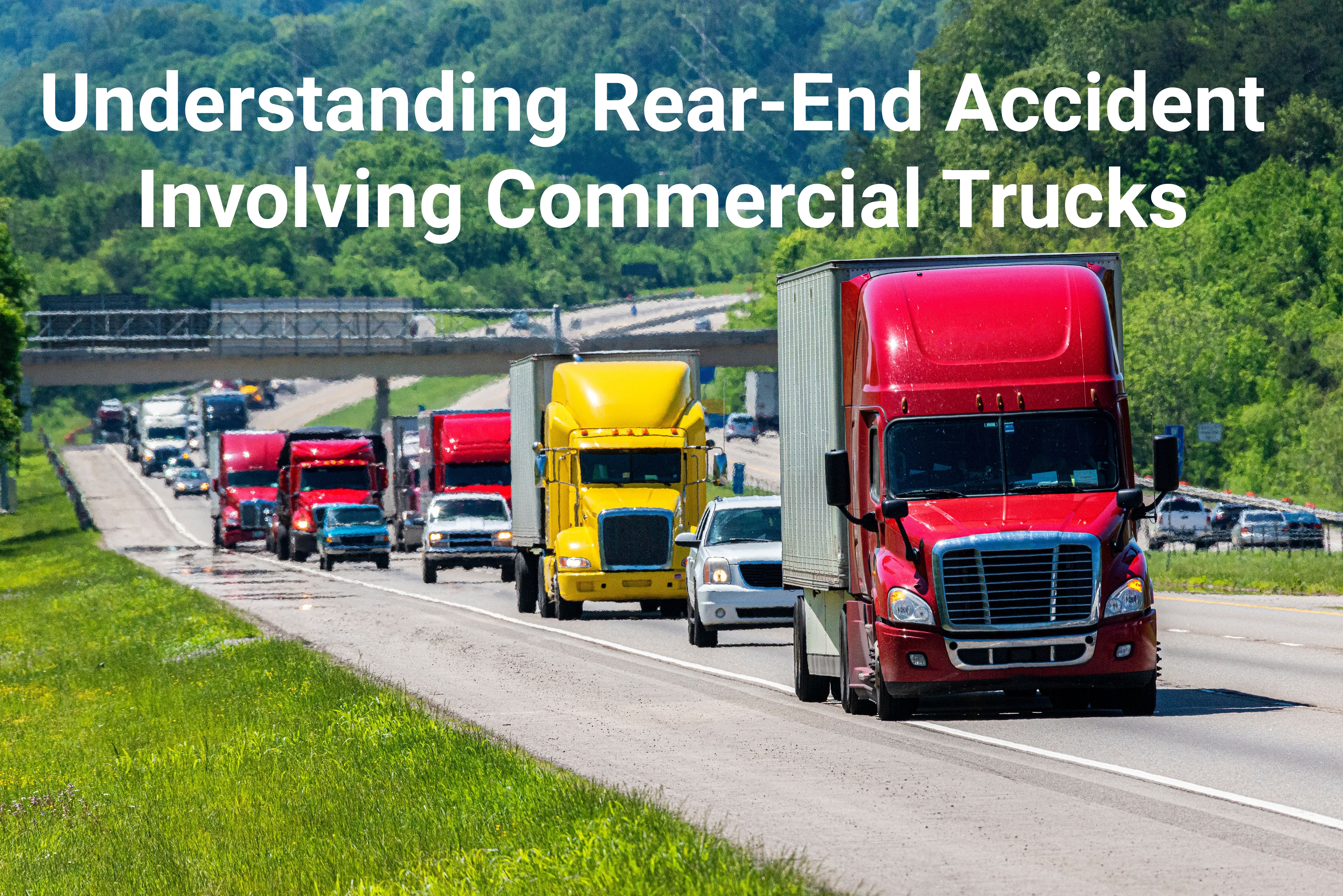
 Request FREE consultation - 1866-758-4529
Request FREE consultation - 1866-758-4529 
Rear-end accidents involving commercial trucks have their own set of challenges and implications. Understanding the dynamics, causes, and aftermath is key for all drivers. This guide covers the ins and outs of rear-end accidents involving commercial trucks, with stats and advice.
Rear-end collisions involving commercial trucks happen when a semi-truck hits the back of another vehicle. These accidents can be caused by distracted driving, tailgating, sudden braking, and adverse weather conditions. The size and weight of commercial trucks make these accidents more severe.
The stopping distance of a semi-truck vs a car is determined by weight, momentum, and braking systems. According to the FMCSA, a fully loaded truck traveling at 65mph takes about 525 feet to stop. A passenger car takes about 316 feet to stop under the same conditions. The Insurance Institute for Highway Safety says 18 Wheelers weigh 20 to 30 times more than cars.
The extra weight adds to the stopping distance, especially on wet or slippery roads. According to the National Highway Traffic Safety Administration, an additional factor is big rigs’ use of air brakes, which take longer to engage than hydraulic brakes in cars.
In today’s hyper-connected world, distractions are everywhere on the road. From smartphones to in-car entertainment systems, drivers get distracted from the task. Distracted driving increases the risk of rear-end accidents involving commercial trucks.
A commercial truck following too close, known as tailgating, is a common cause of rear-end collisions. Not enough following distance leaves no room for reaction in case of sudden stops or emergencies, and results in accidents.
Due to their size and weight, commercial trucks require a significant amount of stopping distance. But sudden braking, whether due to driver error or mechanical issues, can catch the trailing vehicle off guard and result in rear-end accidents.
Bad weather, including rain, snow, or fog, reduces visibility and traction, increasing the likelihood of rear-end collisions involving commercial trucks. Reduced visibility and slippery road surfaces pose a significant challenge for drivers, often resulting in accidents.
Determining fault in rear-end accidents involving commercial trucks requires a thorough investigation of the accident. Driver negligence, vehicle maintenance, and following traffic laws are key in determining fault.
Multiple parties may be at fault in a rear-end accident involving a commercial truck. Comparative fault laws govern the allocation of fault to each party and ensure fair compensation for all parties involved.
Victims of rear-end accidents involving commercial trucks can pursue legal options to recover damages for their injuries, medical bills, lost wages, and pain and suffering. Getting the help of an experienced personal injury attorney is crucial in dealing with a truck crash and the legal process.
Defensive driving is the best way to avoid accidents. Keeping a safe distance and a good lookout can reduce the risk of rear-end accidents involving commercial trucks.
Advancements in vehicle safety technologies, such as collision avoidance systems and automatic emergency braking, can mitigate the severity of rear-end collisions. Fleet operators and truck manufacturers are increasingly incorporating these technologies to make the roads safer.
Adhering to federal and state commercial truck operations regulations is key to preventing rear-end accidents. Comprehensive training programs, regular vehicle inspections, and enforcement of hours-of-service regulations also contribute to safer roadways.
Rear-end accidents involving commercial trucks pose risks to all motorists. By understanding the dynamics, causes, and legal aspects of such accidents, we can prevent them and make the roads safer for everyone. Through proactive measures, advanced safety technologies, and regulatory compliance, we can minimize the impact of rear-end accidents and strive for a safer future.
Contact Baumgartner Law Firm for a free consultation about your commercial vehicle accident with a commercial vehicle.
Call the Houston truck accident attorneys at Texas Truck Accident Lawyer for a FREE consultation.
Why Are Rear-End Collisions So Dangerous?
I Was Rear Ended By an 18-Wheeler in Houston What Do I do?